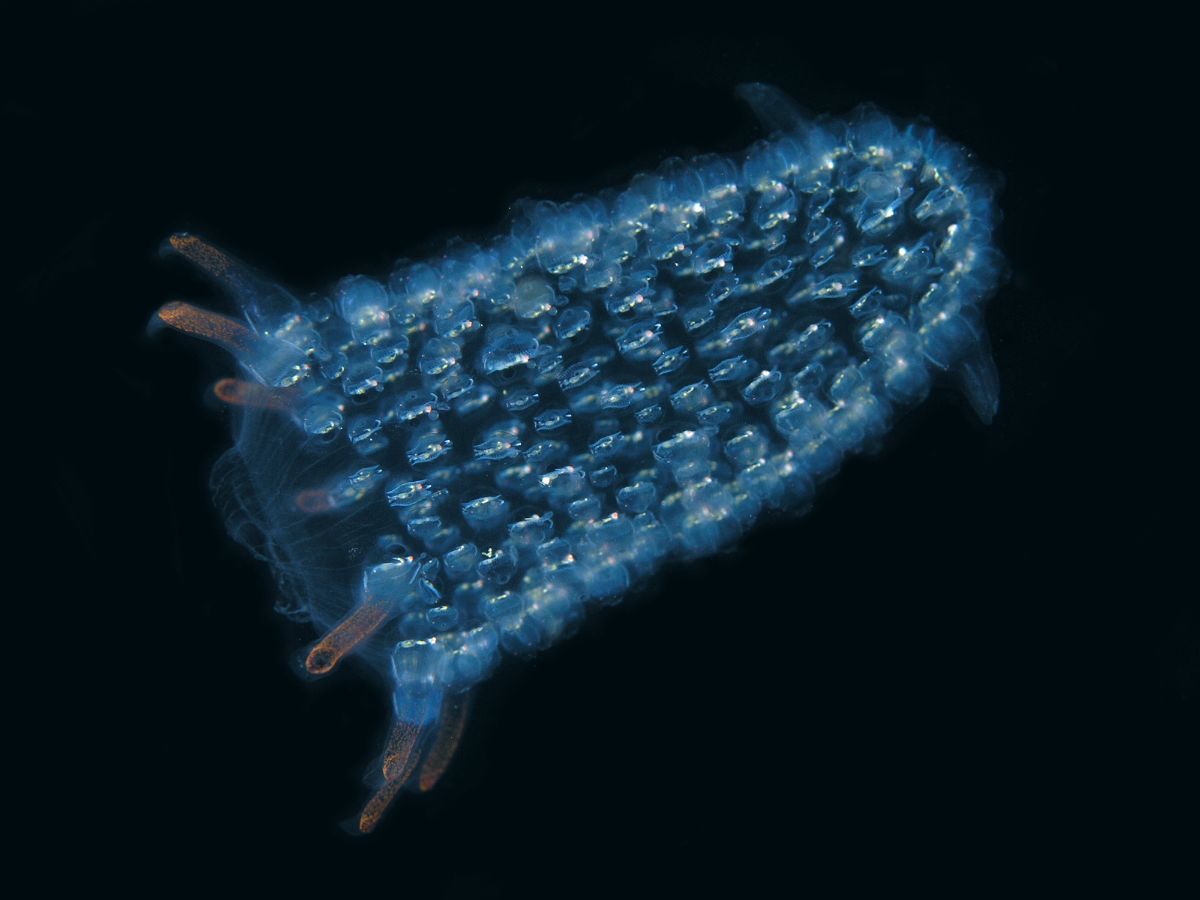Name
Pyrosoma
pyrosomes
Framing
Phylum: Chordata
Subphylum: Tunicata
Class: Thaliacea
Order: Pyrosomatida
Genus: Pyrosoma
Habitat
Aquatic, marine. Pelagic. They generally live in the upper layers, although some can be found at greater depths.
Feeding
Filter. They filter the water and eat the plankton that is in it, specifically they feed on nanoplankton (plankton smaller than 25 microns).
Distribution
tropical and subtropical seas. A species in the Mediterranean. It should be noted that they are extremely rare to see, in fact they are so, so, so rare that scientists ironically call them the "unicorns of the sea" since sightings of these colonies are incredibly rare.
Conservation status
There is no species of the genus listed as threatened.
Additional information
Free way of life. Colonial. Hollow, glove-finger-shaped swimming colonies with transparent or translucent walls from a few cm to more than 2 m (there is a record of a 20 m specimen in New Zealand). The zooids have the two opposite siphons at the ends of the body, with the exhalant towards the interior of the general cavity of the colony. Colored yellowish or blue-green resplendent by the existence of symbiotic luminescent bacteria. Pyrosomes are planktonic, meaning their movements are largely controlled by currents, tides, and waves in the oceans. However, on a smaller scale, each colony can move slowly by the process of jet propulsion, created by the coordinated beating of cilia on the gill baskets of all zooids, which also create feeding currents. They are important as prey for several species of fish, turtles, seabirds and in some cases they have also been found in the stomachs of cetaceans.
Additional information
Bibliography
- Madin, L. (2018). World List of Thaliacea. Pyrosoma atlanticum Péron, 1804. Accessed through: World Register of Marine Species at: http://www.marinespecies.org/aphia.php?p=taxdetails&id=137250 on 2018-03-23
- Riedl, R. (1986). Fauna y flora del mar Mediterráneo. Omega. Barcelona. 858 pp.



